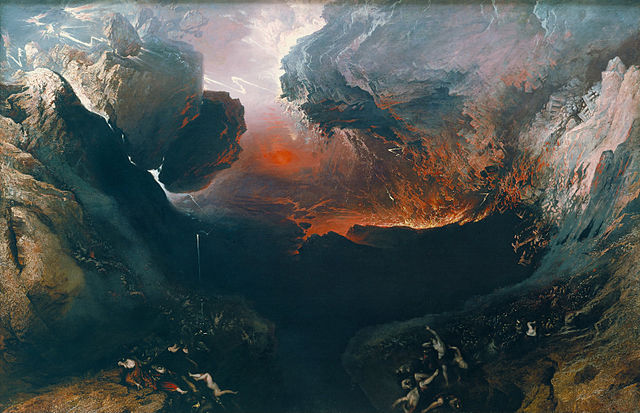Divine retribution is supernatural punishment of a person, a group of people, or everyone by a deity in response to some action. Many cultures have a story about how a deity exacted punishment upon previous inhabitants of their land, causing their doom.
The End of the World, commonly known as The Great Day of His Wrath, an 1851–1853 oil painting on canvas by the English painter John Martin. According to Frances Carey, the painting shows the "destruction of Babylon and the material world by natural cataclysm". This painting, Carey holds, is a response to the emerging industrial scene of London as a metropolis in the early nineteenth century, and the original growth of the Babylon civilisation and its final destruction. According to the
The Destruction of Sodom And Gomorrah by John Martin, 1852
A flood myth or a deluge myth is a myth in which a great flood, usually sent by a deity or deities, destroys civilization, often in an act of divine retribution. Parallels are often drawn between the flood waters of these myths and the primeval waters which appear in certain creation myths, as the flood waters are described as a measure for the cleansing of humanity, in preparation for rebirth. Most flood myths also contain a culture hero, who "represents the human craving for life".
"The Deluge", frontispiece to Gustave Doré's illustrated edition of the Bible
George Smith, who discovered and translated the Epic of Gilgamesh
The Eve of the Deluge, by John Martin, 1840. Depicts a comet causing the Great Flood.
Matsya-avatara of Lord Vishnu pulls Manu's boat after having defeated the demon.





